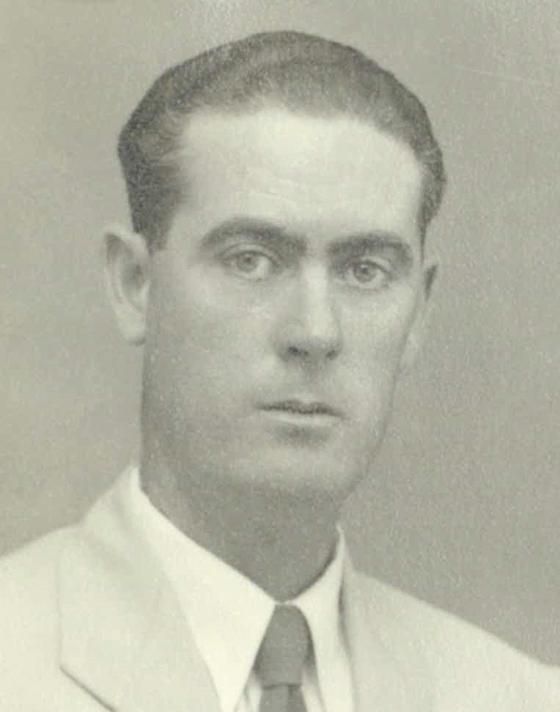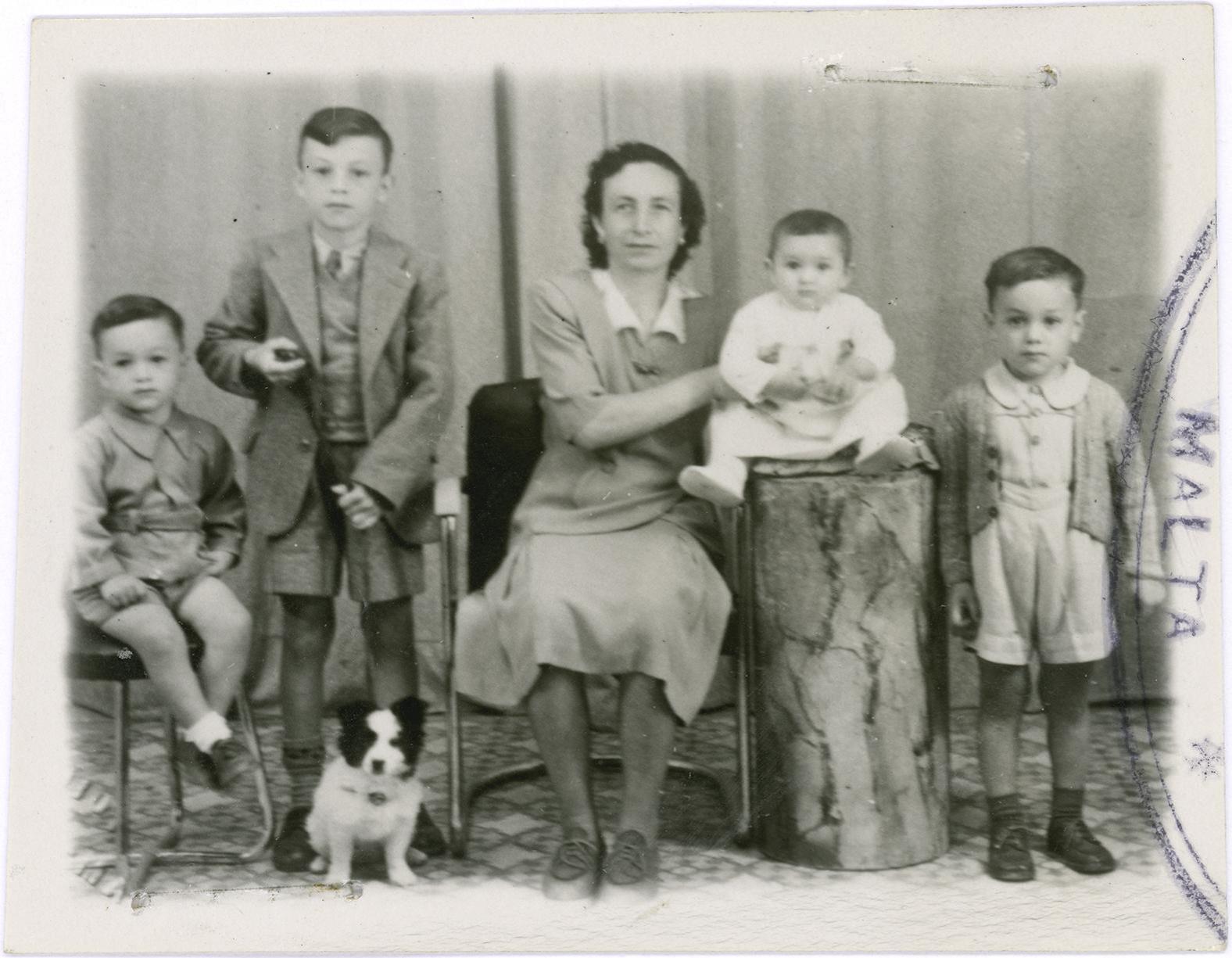 Passport photograph of Tony Grima, 1947. Courtesy of Theresa Grima.
Passport photograph of Tony Grima, 1947. Courtesy of Theresa Grima.Dockyard shipwright Tony Grima was just 22 when he was made redundant in 1948 as work dried up in post-war Malta.
Luckily for him, Malta and Australia had just signed a migration agreement and he was accepted under the scheme, meaning he only had to pay £10 for his passage.
Grima, who had left school aged 14 and learned his trade during the war after winning an apprenticeship at the dockyard, was part of the second group of assisted migrants leaving under the 1948 agreement.
His story – including the culture shock he experienced in Australia – is among the stories retold by the National Archives of Australia as it marks the 75th anniversary of this historic agreement that saw around 10 per cent of Malta’s population migrate Down Under.
Grima’s move to Australia was temporarily tarnished when he was seriously injured at work and hospitalised for nearly 11 months.
However, he won £3,000 in compensation, which he used to place a deposit on a house and take a trip to Malta.
During this trip in 1953, Grima had told Times of Malta that Australia was the best place in the world for migrants, and no other country in the world had so much to offer.
Grima was among over 35,000 Maltese people who were assisted to Australia between 1948 and 1965 in line with the post-war agreement.
Under the agreement, Maltese migrants bound themselves to remain in Australia for at least two years.
Once there, they were assisted with finding employment and provided social services such as health and medical care, maternity allowance, child endowment, and sickness and unemployment benefits.
Alfred Bayliss was the 25,000th Maltese person to migrate, leaving for Australia in 1960 with his wife Aida and daughters Cristina and Diana.
 The Commissioner for Malta, Captain Henry Curmi OBE and Australian Immigration Minister the Hon. Arthur Calwell signing the 1948 Malta-Australia Migration Agreement. Photo: Courtesy of Dr Mary Elizabeth Calwell
The Commissioner for Malta, Captain Henry Curmi OBE and Australian Immigration Minister the Hon. Arthur Calwell signing the 1948 Malta-Australia Migration Agreement. Photo: Courtesy of Dr Mary Elizabeth CalwellThe family initially found it difficult to find accommodation, but they eventually settled down in Glenroy, in Melbourne’s north and bought a milk bar.
It was hard work, opening at 6am and not closing until midnight, with Alfred working also as a mechanic and Aida qualifying as a nurse’s aide.
 Alfred Bayliss was the 25,000th Maltese person to emigrate to Australia along with his wife Aida and daughters Diana and Cristina. They faced racial discrimination but eventually settled. Photo: Courtesy of National Archives of Australia
Alfred Bayliss was the 25,000th Maltese person to emigrate to Australia along with his wife Aida and daughters Diana and Cristina. They faced racial discrimination but eventually settled. Photo: Courtesy of National Archives of AustraliaThe Bayliss family always spoke English at home, something they believe helped them integrate. However, this did not prevent the children from being bullied and called ‘wogs’. In 1972, the Bayliss became Australian citizens, however Alfred remained proud of his Maltese homeland.
His relatives were among around 150 people at a commemorative event at the Victorian Archives Centre at North Melbourne, hosted by Simon Froude, Director General of the National Archives of Australia Simon Froude.
At the event, the National Archives launched a display called Restricted to Assisted: Maltese Migration to Australia, which will remain in Melbourne until July 20.
It will then be moved to Brisbane, with Queensland hosting a significant Maltese community.
With the help of the Public Record Office Victoria, the Maltese Community Council of Victoria and members of the Maltese community, through the display the National Archives explore the history of Maltese migration to Australia.
This includes the discrimination and restrictions Maltese experienced despite being British subjects, and how Malta’s experience of World War II helped change Australian perceptions of their suitability as migrants, culminating in the 1948 Malta-Migration Agreement, which finally placed Maltese migrants on the same footing as British migrants from the UK, Ferry explained.
The event was attended by the Maltese High Commissioner Mario Farrugia Borg, Chair of the Australian Parliament’s Joint Standing Committee on Migration MP Maria Vamvakinou, daughter of former Immigration Minister Arthur Calwell who signed the agreement Mary Elizabeth Calwell, Mayor of Hobsons Bay Tony Briffa, Chair of the Victorian Ethnic Communities Council Eddie Micallef, Maltese-Australian historian Dr Barry York OAM and Keeper of Public Records Justine Heazlewood.
A recorded message by Foreign Affairs Minister Ian Borg was played at the event, which also saw the participation of the Maltese Own Band Philharmonic Society.
Mystery man: can you identify him?
 The mystery man who the National Archives of Australia is seeking to identify.
The mystery man who the National Archives of Australia is seeking to identify.The archives are trying to identify a man whose photograph was separated from his file.
The bundle it was in covers Maltese migrants with surnames ranging from Tabone to Zuereb (Xuereb?) who arrived in Melbourne. The photograph likely dates from around 1949 to 1950.
Can you help the National Archives put a name to the face and reunite the photograph with the right records?
Contact the archives here.
What happened to the dog?
 Jessie Grima and her children arrived in Melbourne as unassisted migrants in March 1951. At the feet of 11-year-old Alfred Demajo is their dog, Flossy, which had to be left behind.
Jessie Grima and her children arrived in Melbourne as unassisted migrants in March 1951. At the feet of 11-year-old Alfred Demajo is their dog, Flossy, which had to be left behind.When the Maltese migrated, they bid farewell to loved ones which they left behind… and this included pets.
Among others, Jessie Grima left for Australia with her children in 1951 but 11-year-old Alfred’s dog Flossy only made it as far as the family’s migration application.
When the family boarded SS Jenny for Australia to be reunited with Jessie’s husband Joseph, strict quarantine rules prohibited bringing Flossy with them aboard.
Flossy was rehomed by the children’s grandparents, however, the family reportedly expressed “great disappointment” that they had left the dog behind.
Alfred remained a dog lover and over the years some of his dogs won prizes at the Royal Melbourne Show.








